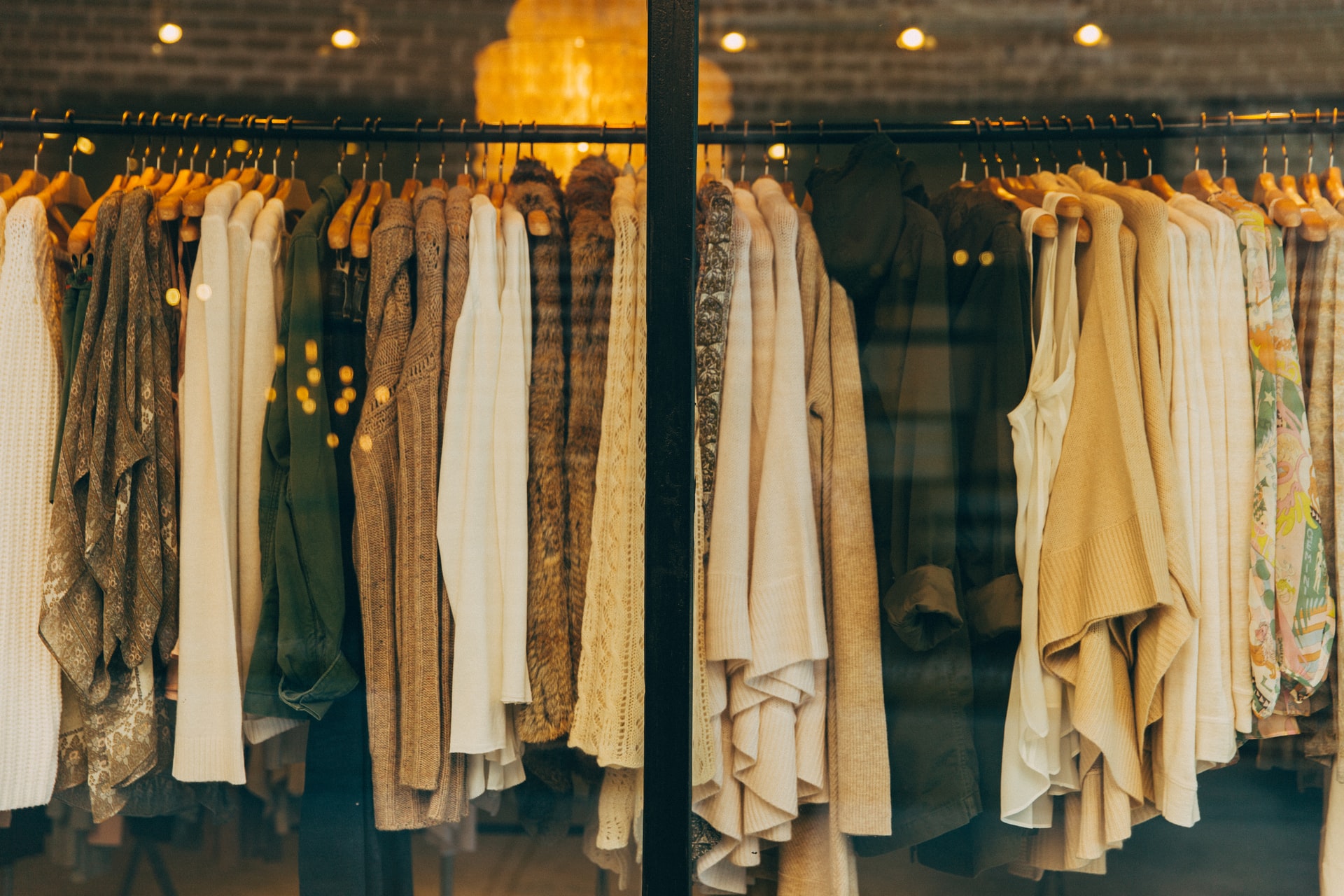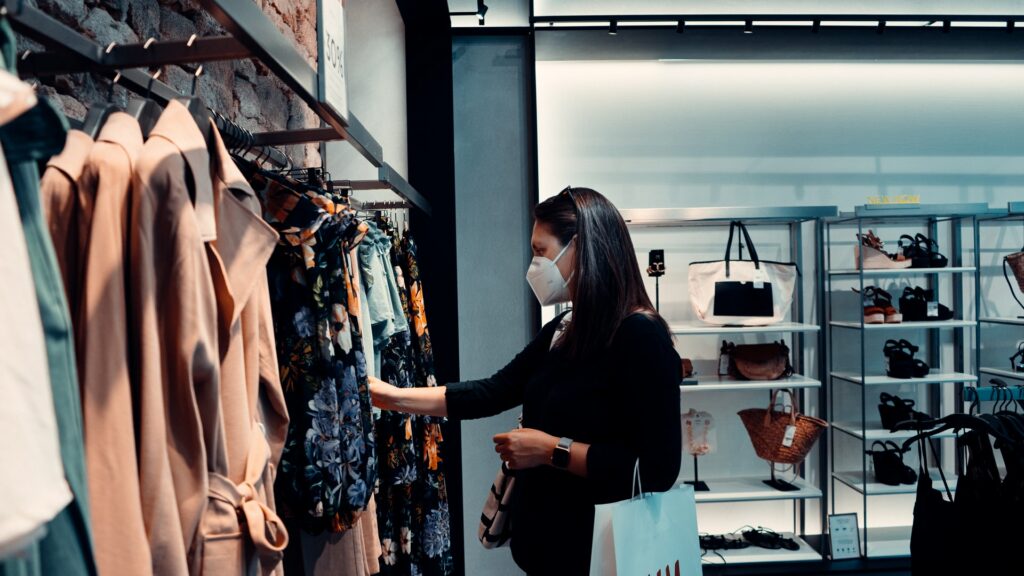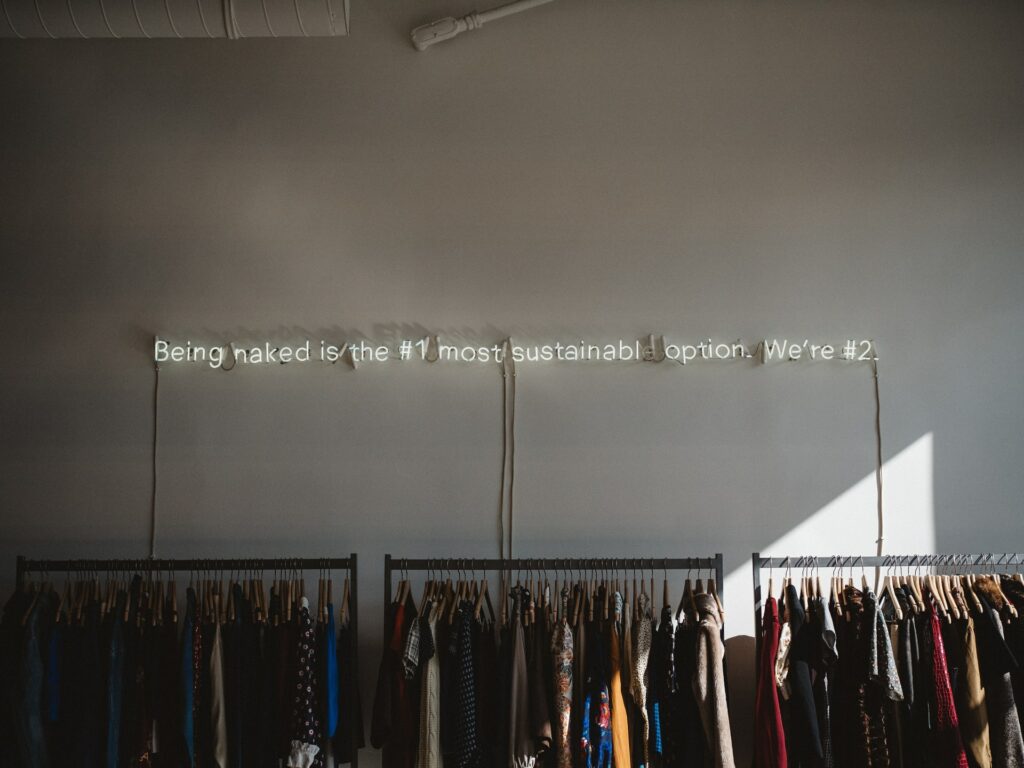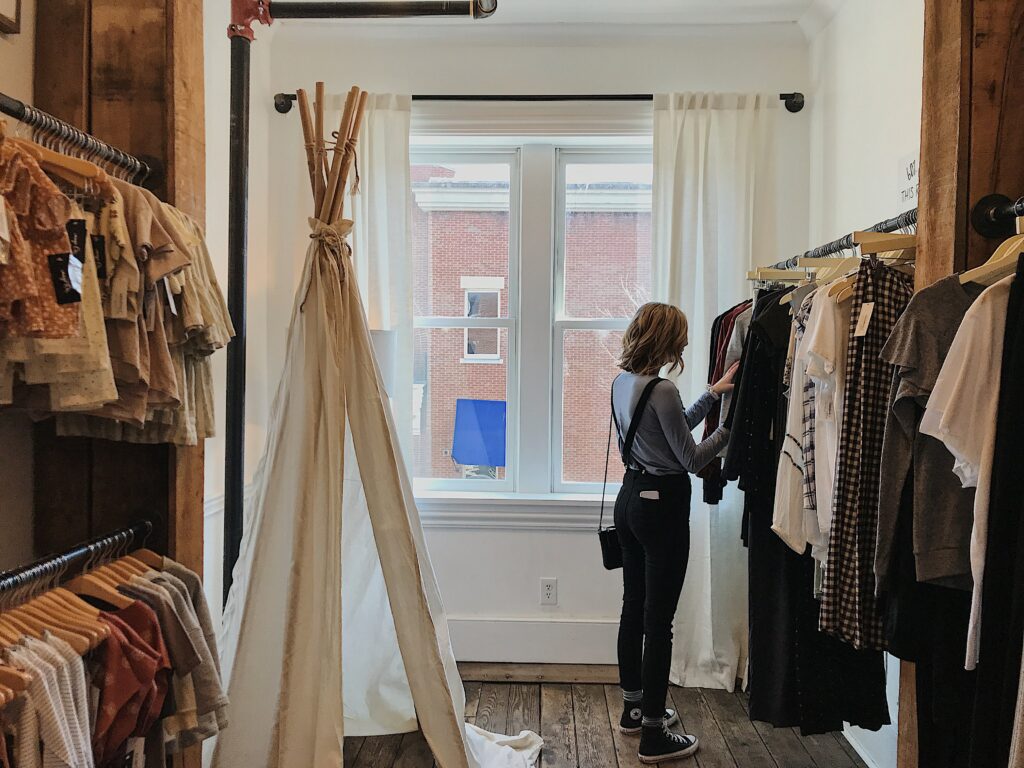Fast fashion describes cheap, trendy clothes with a short lifespan – and an industry responsible for human rights abuses and heavy environmental damage.

What makes fast fashion ‘fast’?
Fast fashion designs are often based on high fashion and celebrity style. Brands produce multiple collections each season, following trends as they emerge – it might only take days for an item featured on an influencer’s Instagram to be replicated and put up for sale. The clothing quality is usually poor, further shortening the lifespan of an item.
This is a relatively new type of consumerism, emerging in the 1990s with the popularity of high street shops such as H&M and Zara, due to the low costs of manufacturing in developing countries and transportation. Today, fast fashion is even ‘faster’, fronted by cheap online fashion brands such as Boohoo and Shein.

What’s so bad about it?
The items are typically produced by low-paid, exploited workers in countries such as Bangladesh and Sri Lanka. The factory conditions are often dangerous. Toxic chemicals can cause respiratory illnesses and skin irritation, and there are multiple reports of child labour and sexual harassment in sweatshops.
Read more: ‘Inside the fast fashion industry‘.
Fast fashion is bad for the environment, too. Chemicals, for example, can pollute waterways. Polyester is made using fossil fuels and sheds microplastics. Cotton requires vast amounts of water to produce.
What’s the fix?
To be better consumers, we can prioritise buying clothes we need and that will last, as well as taking better care of items we already own.
We need to reset the way we shop.
The answer isn’t demonising people who buy cheap clothing – that might be down to budget rather than choice. And there’s nothing wrong with very occasionally buying something that you might only wear a handful of times – but let’s not make it the norm.

How to slow down the cycle
- Those who can afford to do so should aim to buy from ethical outlets.
- Consider investment pieces – some great jeans or a good coat, for example. They might cost more upfront, but you’ll wear them for years.
- Buy second-hand from charity or vintage shops – not only is it more sustainable, but you also won’t bump into someone wearing the exact same thing. And there are some great bargains to be found.
- Rent occasion wear rather than buying something you’ll only wear once.
- Reduce waste by learning how to fix and care for your items. Check out some easy ways to mend your gear.
- When it’s finally time to call it a day, recycle your old garments or – if they’re still in decent shape – donate them.

Sources
Ethical Consumer, What is fast fashion and why is it a problem?
good on you, What Is Fast Fashion and Why Is It So Bad?
McKinsey, Style that’s sustainable: A new fast-fashion formula
The Good Trade, What Is Fast Fashion, Anyway?
The Guardian, Abuse is daily reality for female garment workers for Gap and H&M, says report
The Guardian, Child labour in the fashion supply chain
UN Environment Program, Putting the brakes on fast fashion
World Resources Institute, The Apparel Industry’s Environmental Impact in 6 Graphics

